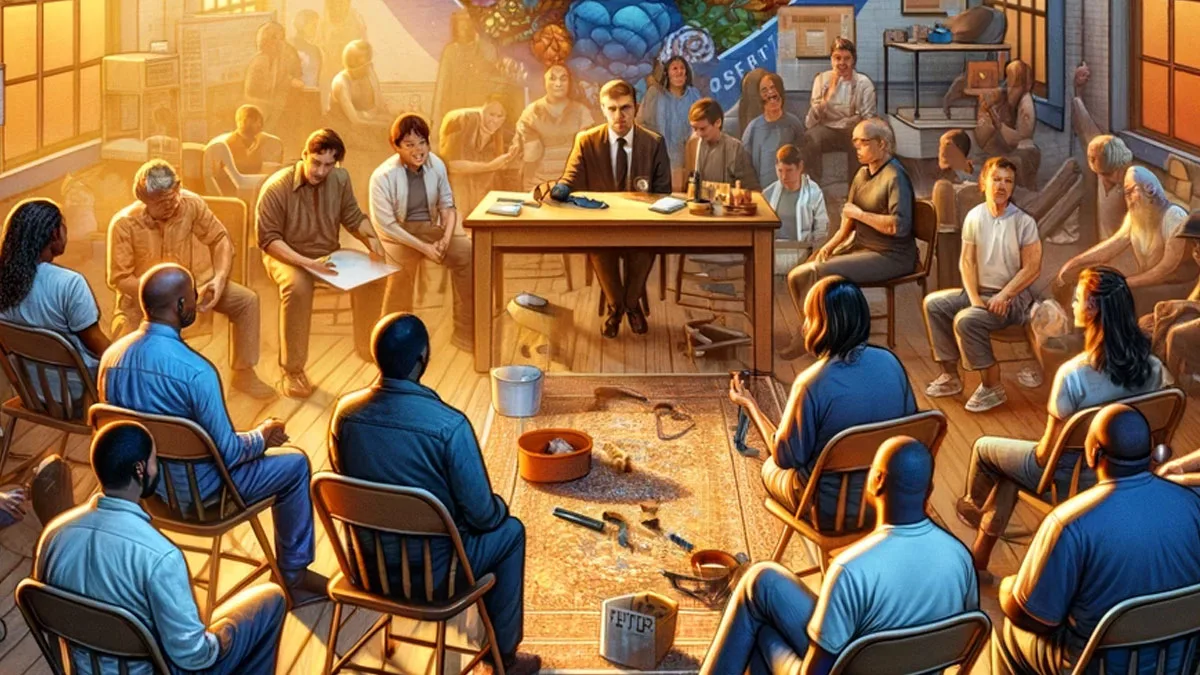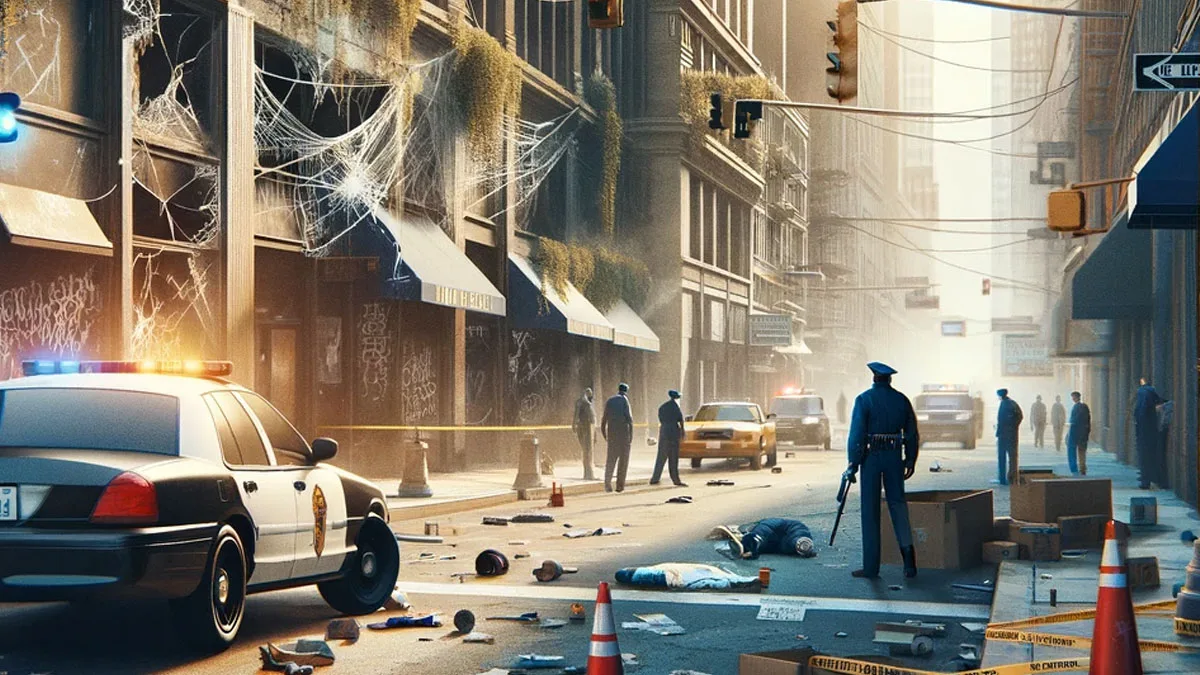Blue collar crime, a term deeply ingrained in our societal and legal lexicon, often evokes images of overt, street-level criminal activities that contrast sharply with the covert operations of white collar crime. These crimes, typically associated with physical labor or manual work, have a direct and tangible impact on individuals and communities. In this article, we delve into the world of blue collar crime, unraveling its definition, exploring its various forms, and examining its implications. Our journey through this landscape aims to shed light on the less-discussed but equally significant spectrum of criminal behavior that affects the daily lives and safety of people across all strata of society.
What is Blue Collar Crime?
Blue collar crime refers to crimes committed by individuals from lower socio-economic backgrounds, often involving direct, physical actions against property or persons. These crimes are typically more visible and detectable than their white collar counterparts. Blue collar crimes are not characterized by the deceit and concealment that define white collar crimes but are rather direct in their execution, such as theft, burglary, assault, and vandalism. The term ‘blue collar’ itself stems from the early 20th century, when manual laborers often wore durable fabrics, usually blue, to withstand the physical nature of their work. In a legal context, these crimes are usually more straightforward in terms of investigation and prosecution due to their overt nature and the immediate evidence they leave behind.
Blue Collar Crime Examples
The spectrum of blue collar crime is broad, encompassing various offenses. Some prominent examples include:
- Theft and Burglary: Perhaps the most common form, theft involves unlawfully taking someone’s property, while burglary refers to illegal entry into a structure with intent to commit theft or another felony.
- Assault: This crime involves causing physical harm to another person or even making threats or attempts to cause harm.
- Vandalism: The act of deliberately destroying or damaging property without permission, ranging from graffiti to destruction of public facilities.
- Robbery: A more severe form of theft, robbery involves taking property from another person through force or intimidation.
- Drug Crimes: These include the manufacture, distribution, and possession of illegal substances, often leading to other forms of blue collar crime.
Each of these crimes has its nuances and legal definitions, but they all share a common thread of being direct actions against individuals or property, often resulting in immediate and tangible consequences.
Causes and Motivations Behind Blue Collar Crime

The roots of blue collar crime often lie in socio-economic and environmental factors. Poverty, unemployment, and lack of education are primary drivers, pushing individuals towards criminal activities as a means of survival or as an outlet for frustration. In many cases, blue collar crimes are committed out of necessity or desperation, rather than for personal gain or malice. Psychological factors, such as impulse control issues, substance abuse, and exposure to violence or crime at a young age, also play a significant role. Additionally, societal influences like peer pressure, neighborhood crime rates, and the availability of criminal opportunities can sway individuals towards such activities. Understanding these causes and motivations is crucial for developing effective prevention and intervention strategies.
Impact of Blue Collar Crime on Victims and Society
The impact of blue collar crime is immediate and often devastating, affecting individuals, families, and communities. Victims of these crimes can suffer physical harm, emotional trauma, financial loss, and a lasting sense of fear and insecurity. The ripple effect extends to the community, breeding mistrust and a sense of vulnerability, particularly in neighborhoods plagued by frequent criminal activities. Economically, blue collar crime can lead to increased insurance costs, decreased property values, and higher expenses in law enforcement and the judicial system. Socially, these crimes contribute to the stigmatization of certain areas as ‘unsafe,’ impacting community cohesion and hindering social and economic development.
Legal Framework and Penalties
The legal framework for addressing blue collar crime typically involves criminal law at local, state, and federal levels. Penalties for these crimes vary widely depending on the severity of the offense, the criminal history of the offender, and the jurisdiction. Common penalties include incarceration, fines, probation, and community service. For more severe crimes like armed robbery or aggravated assault, longer prison sentences are common. The legal system also provides for mitigating factors, such as the age of the offender or circumstances that may have led to the criminal behavior. In recent years, there has been a growing emphasis on rehabilitation and restorative justice, especially for non-violent offenders and youth, to address the underlying causes of criminal behavior and reduce recidivism rates.
Prevention and Rehabilitation Efforts
Effective prevention and rehabilitation are key to reducing blue collar crime. Prevention efforts often focus on addressing the root causes, such as improving socio-economic conditions, enhancing educational opportunities, and fostering community engagement. Programs aimed at youth development, job training, and substance abuse treatment can significantly reduce the inclination towards criminal activities.
Rehabilitation efforts, particularly for those already in the criminal justice system, are crucial in preventing re-offending. These include educational and vocational training programs, counseling, and support groups that help integrate offenders back into society. Community-based programs that offer support and monitoring have proven effective in reducing recidivism. Additionally, initiatives like restorative justice, which involve reconciling the offender with the victims and community, can foster a deeper understanding of the consequences of crime and promote healing.
Case Studies: Notable Blue Collar Crime Incidents
- The Central Park Jogger Case (1989): A high-profile instance of assault and rape in New York City’s Central Park. This case was notable for its initial wrongful conviction of five juveniles, highlighting issues in the criminal justice system.
- The L.A. Riots (1992): Following the acquittal of police officers in the beating of Rodney King, widespread riots, looting, and arson occurred in Los Angeles. This incident exemplified the consequences of community anger and distrust towards law enforcement.
- The Boston Marathon Bombing (2013): A terrorist attack during the Boston Marathon led to widespread public fear and significant security implications.
These cases illustrate the diverse nature of blue collar crimes and their profound impact on society and the legal system.
Conclusion
Blue collar crime, with its direct and often violent nature, poses a significant challenge to societal safety and stability. Understanding its causes, from socio-economic factors to psychological influences, is essential in developing effective strategies for prevention and rehabilitation. The legal system plays a critical role in this context, balancing the need for punishment with the opportunity for rehabilitation. As we have seen from various case studies, the effects of blue collar crime extend far beyond the immediate victims, impacting entire communities and sometimes sparking nationwide conversations. Addressing these crimes requires a multifaceted approach that combines law enforcement, community engagement, and social support systems. Through concerted efforts, it is possible to mitigate the impact of blue collar crime and foster safer, more resilient communities.









Leave a Reply